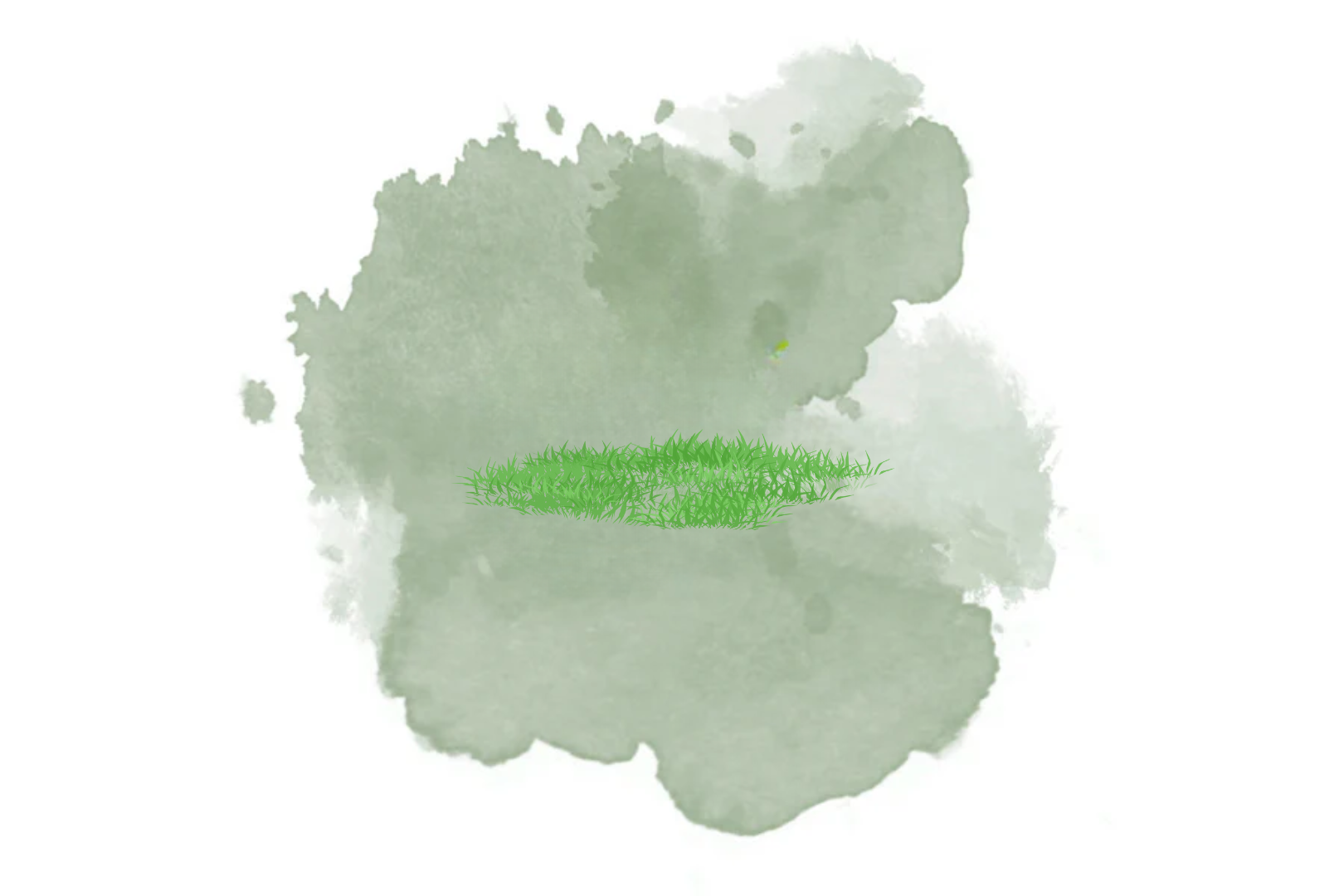Having a garden or a small green space in your home is certainly a dream for many people, which is why it's essential to choose the perfect lawn that will make your outdoor area welcoming and well-kept. It's not just a matter of aesthetics: the type of lawn you decide to plant will affect maintenance, climate resistance, and even how you enjoy your outdoor space. In this guide, we will explore the different types of turf, the key criteria for making an informed choice, and the best techniques for sowing.
Types of Lawns
One of the first steps in choosing the right lawn is understanding the different types of turf available. Each type of grass has specific characteristics that make it more or less suitable for certain environments and climatic conditions.
- Rustic Lawn: Ideal for those who want a durable, easy-to-maintain lawn. It’s perfect for frequently used gardens, families with children, or pets, as it withstands heavy foot traffic and requires minimal upkeep.
- English Lawn: If you love the idea of an elegant, always-green lawn, the English lawn is the perfect choice. However, it requires constant care, frequent mowing, and abundant watering. It is ideal for areas with a cool and humid climate.
- Shade Lawn: If your garden gets little direct sunlight, there are grass varieties that adapt well to these conditions, such as Festuca rubra. These lawns grow well in shaded areas but may be less resistant than varieties exposed to more sun.
- Flowering Lawn: If you're looking for an eco-friendly, low-maintenance option, you can opt for a flowering lawn, composed of grasses and wildflowers. It doesn’t need frequent mowing and is ideal for attracting pollinators and small animals to your garden.
Key Factors in Choosing a Lawn
Choosing the perfect lawn depends on various factors that must be carefully considered to ensure optimal and long-lasting results.
- Climate: The climate of your region plays a crucial role. Some types of turf, such as Festuca or Lolium, are more resistant to cold temperatures, while others, like Zoysia or Cynodon dactylon, are ideal for hot and dry climates.
- Sun Exposure: Evaluate how much sunlight your garden gets. There are lawns that tolerate shade better and others that thrive in full sun.
- Garden Use: If your garden will be used often for recreational activities, choose a lawn resistant to heavy foot traffic. Conversely, if you’re looking for an ornamental lawn, you can opt for more delicate but aesthetically appealing varieties.
- Maintenance: Some lawns, like rustic ones, require less care, while others, like the English lawn, need frequent mowing, regular fertilization, and abundant watering. Consider the time and resources you are willing to dedicate to lawn care.
Sowing the Lawn: Essential Steps
Once you’ve chosen the type of lawn, it's time to proceed with sowing. This process requires attention and precision to ensure uniform growth and a healthy lawn.
- Soil Preparation: Before sowing, it's essential to prepare the soil. Remove any weeds, stones, and roots. Then, work the soil with a spade or a tiller to make it soft and well-drained. Add good organic fertilizer to enrich the soil.
- Leveling: A well-leveled soil is fundamental to avoid water stagnation and ensure even growth. Use a rake to level and slightly compact the ground.
- Sowing: Sow the lawn preferably in autumn or spring, when temperatures are mild. Evenly scatter the seeds using a seed spreader or by hand, taking care not to leave any bare areas. After sowing, lightly cover the seeds with a thin layer of soil and compact the ground with a roller.
- Watering: In the first few days after sowing, it’s important to keep the soil constantly moist without creating water stagnation. Water regularly and gently to avoid shifting the seeds.
Lawn Maintenance
Once your lawn has grown, it will be necessary to adopt a maintenance routine to keep it lush and healthy. Among the most important steps are:
- Regular Mowing: Mowing the lawn regularly stimulates the growth of new grass blades and keeps the turf even. During summer, mowing should be more frequent than in winter.
- Fertilization: Fertilize the lawn at least once or twice a year to provide essential nutrients for healthy growth. You can use organic fertilizers or specific lawn fertilizers.
- Watering: The amount of water required varies depending on the type of lawn and climate. During dry periods, it's essential to water abundantly, especially during the cooler times of the day (early morning or evening).
Choosing the perfect lawn for your garden requires careful consideration of the types of turf, climatic conditions, and your maintenance needs. With the right care and attention, you can create a green space that not only enhances the aesthetic of your home but also becomes a pleasant place to spend time. If you follow the sowing steps correctly and take consistent care of your lawn, the result will be a lush and resistant turf, ready to enrich your garden for many years. With our Lerava products, it will be easy and enjoyable to create the garden of your dreams!

![#Taglia_1.7kg [sku-A0291] [lang-IT] [lang-EN]](http://lerava.com/cdn/shop/files/Cessione_IT.png?v=1749635507&width=2000)
![#Taglia_1.7kg [sku-A0291] [lang-IT] [lang-EN]](http://lerava.com/cdn/shop/files/Cessione_IT.png?v=1749635507&width=104)
![[lang-IT] [lang-EN]](http://lerava.com/cdn/shop/products/B09SLG7DHN.MAIN.jpg?v=1674813929&width=104)
![#Taglia_70m² [sku-VV-KMTV-QLBE] [lang-it] [lang-en]](http://lerava.com/cdn/shop/files/Primavera_IT_1.png?v=1749609539&width=104)
![#Taglia_100m² [sku-A0360] [lang-IT] [lang-EN]](http://lerava.com/cdn/shop/files/ESTATE_IT_100m.jpg?v=1751879953&width=104)
![#Taglia_70 m² [sku-A0016] [lang-it] [lang-en]](http://lerava.com/cdn/shop/files/Add_a_heading.png?v=1758461245&width=104)
![[lang-IT] [lang-EN]](http://lerava.com/cdn/shop/files/Solfato_Di_Ferro_IT_1.png?v=1749608449&width=104)
![#Taglia_30m² [sku-AVARACH] [lang-IT] [lang-EN]](http://lerava.com/cdn/shop/files/Champion_IT.png?v=1749608049&width=104)
![#Taglia_30m² [sku-A0265] [lang-IT] [lang-EN]](http://lerava.com/cdn/shop/files/Express_IT_1.png?v=1749619514&width=104)
![#Taglia_10m² [sku-A0148] [lang-IT] [lang-EN]](http://lerava.com/cdn/shop/files/1_10_IT.jpg?v=1727419569&width=104)
![#Taglia_20m² | 200g [sku-A0192] [lang-IT] [lang-En]](http://lerava.com/cdn/shop/files/1_1_193571c2-dc92-488a-b9ac-170592f0b658.jpg?v=1744210602&width=104)
![#Taglia_200g [sku-A0220] [lang-IT] [lang-EN]](http://lerava.com/cdn/shop/files/IT_Semi-Trifoglio200g.jpg?v=1756610388&width=104)





